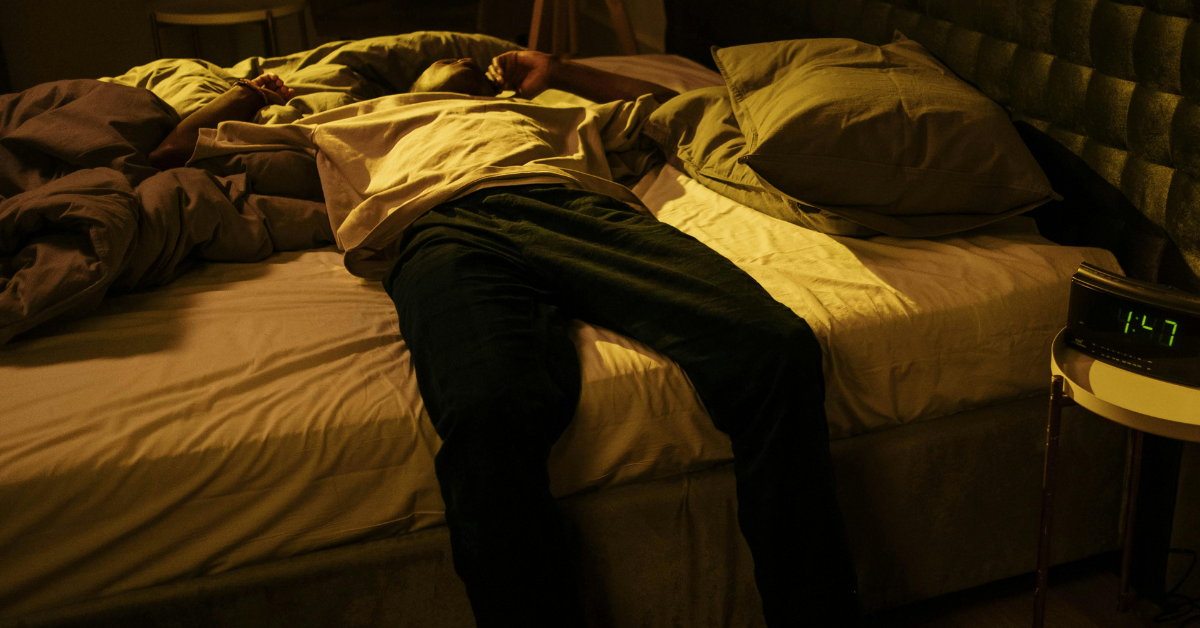Depression is a common mental health condition that affects millions of people worldwide. However, it is often misunderstood. It can show up in different ways and have various impacts on emotions, thoughts, and daily life. That’s why it’s crucial to understand the different types of depression so that we can provide effective treatment and support.
In this article, we will explore the various forms of depression:
- Major Depression (MDD)
- Melancholia
- Psychotic Depression
- Bipolar Disorder
- Seasonal Affective Disorder (SAD)
- Dysthymic Disorder
- Other Types
Each type has its own set of symptoms and requires specific approaches for management. By learning about these types, you’ll be better equipped to navigate the complexities of depression for yourself or your loved ones. This understanding also helps us develop empathy and provide better support to those who are experiencing depression.
1. Major Depression
Major Depression, also known as clinical depression or Major Depressive Disorder (MDD), is the most common type of depression. It is characterized by persistent feelings of sadness, hopelessness, and a lack of interest or pleasure in nearly all activities.
Definition and Criteria
The diagnostic criteria for MDD include:
- A depressive episode lasting at least two weeks
- Presence of at least five symptoms from the following list:
- Depressed mood most of the day
- Markedly diminished interest or pleasure in almost all activities
- Significant weight loss or gain, or changes in appetite
- Insomnia or hypersomnia
- Psychomotor agitation or retardation
- Fatigue or loss of energy
- Feelings of worthlessness or excessive guilt
- Diminished ability to think or concentrate, indecisiveness
- Recurrent thoughts of death, suicidal ideation, or a suicide attempt
Prevalence and Impact
MDD affects approximately 7% of adults in the United States each year. It significantly impacts individuals’ lives, leading to difficulties in daily functioning, relationships, and work performance. The emotional burden can be profound, often resulting in isolation and a decreased quality of life.
Common Risk Factors
Certain factors increase the risk of developing MDD:
- Genetic predisposition
- Major life changes, trauma, or stress
- Chronic medical conditions such as diabetes or heart disease
- Substance abuse
- Lack of social support
Treatment Modalities
Effective treatment options for MDD include:
- Therapy: Cognitive Behavioral Therapy (CBT), Interpersonal Therapy (IPT), and other forms of psychotherapy.
- Medication: Antidepressants such as SSRIs (Selective Serotonin Reuptake Inhibitors), SNRIs (Serotonin-Norepinephrine Reuptake Inhibitors).
- Lifestyle Modifications: Regular exercise, healthy diet, sufficient sleep.
- Support Systems: Engaging with support groups and fostering strong social connections.
Understanding Major Depression is essential for effective treatment and support. Recognizing its symptoms and risk factors can pave the way for early intervention and better outcomes.
2. Melancholia
Understanding Melancholia as a Specific Subtype
Melancholia is a profound and distinct subtype within the broad spectrum of depression. Often described as melancholic depression, this form of depression carries unique characteristics that set it apart from other types.
Unique Features and Diagnostic Criteria
Key features of melancholic depression include:
- Anhedonia: A marked inability to find pleasure in activities once enjoyed.
- Profound Despair: Persistent feelings of deep sadness or hopelessness.
- Psychomotor Changes: Noticeable agitation or retardation in movements.
- Early Morning Awakening: Waking up significantly earlier than usual, often accompanied by morning depressive mood.
The diagnostic criteria for melancholia emphasize these symptoms, distinguishing it from other depressive disorders.
Distinguishing Melancholia from Other Types of Depression
Unlike atypical depression, which may involve mood reactivity and increased appetite, melancholic depression displays more severe anhedonia and psychomotor disturbances. This sharp contrast helps clinicians accurately identify and diagnose melancholia.
Approaches to Treating Melancholic Depression
Effective treatment for melancholic depression often includes:
- Psychotherapy: Cognitive-behavioral therapy (CBT) can help address negative thought patterns.
- Lifestyle Changes: Regular physical activity, healthy diet, and structured daily routines can provide relief.
- Medication: Antidepressants, particularly those targeting serotonin and norepinephrine reuptake, are commonly prescribed.
Creating a supportive environment with these treatment modalities fosters recovery and well-being for individuals struggling with melancholic depression.
3. Psychotic Depression
Psychotic Depression is a severe mental health condition where depression intertwines with psychosis. Individuals experiencing this form of depression, also known as depression with psychosis, often encounter reality-distorting symptoms, making their journey particularly challenging.
Symptomatology and Diagnostic Criteria
Psychotic Depression encompasses a unique blend of symptoms:
- Depressive Symptoms: Persistent sadness, loss of interest in activities, fatigue, and feelings of worthlessness.
- Psychotic Symptoms: Hallucinations (seeing or hearing things that aren’t there) and delusions (false beliefs not grounded in reality).
This combination can severely impair one’s ability to function, highlighting the importance of recognizing these intertwined symptoms.
Integrated Treatment Approaches
Addressing both depressive and psychotic symptoms simultaneously requires an integrated treatment strategy:
- Therapy: Cognitive Behavioral Therapy (CBT) tailored to challenge both depressive thoughts and psychotic beliefs.
- Medication:
- Antidepressants: To alleviate the core depressive symptoms.
- Antipsychotics: To target the psychotic features.
Having a holistic approach ensures balanced care, fostering a supportive environment conducive to recovery.
4. Bipolar Disorder
Bipolar disorder, also known as manic depression, is characterized by alternating episodes of depression and mania. These mood swings can be intense and disruptive, affecting daily life and relationships.
Mood Episodes
- Depressive Episodes: Symptoms overlap with Major Depression (MDD) and include prolonged sadness, loss of interest in activities, fatigue, and feelings of hopelessness.
- Manic Episodes: Marked by elevated or irritable mood, increased energy, decreased need for sleep, grandiosity, and sometimes reckless behavior.
Symptom Presentation
- Depressive Phase: Similar to MDD but can be interspersed with periods of normal mood.
- Manic Phase: Euphoria, hyperactivity, rapid speech, impulsivity; severe cases may include psychosis.
Differential Diagnosis
Bipolar disorder must be differentiated from Unipolar Depression (MDD). While both involve depressive episodes:
- MDD does not have manic episodes.
- Bipolar disorder includes both depressive and manic or hypomanic episodes.
Treatment Strategies
Effective management of bipolar disorder often involves:
- Mood Stabilizers: Such as lithium or valproate to control mood swings.
- Psychoeducation: Helping individuals understand their condition and recognize early symptoms.
- Therapy: Cognitive-behavioral therapy (CBT) and family-focused therapy offer support.
These comprehensive treatment plans aim to stabilize moods and improve quality of life.
5. Seasonal Affective Disorder (SAD)
Seasonal Affective Disorder, commonly known as SAD, is a mood disorder that follows a seasonal pattern. Typically, individuals with SAD experience depressive episodes during the fall and winter months when daylight hours are shorter. This cyclical nature distinguishes SAD from other types of depression.
Typical Symptoms of SAD:
- Changes in Appetite: Many individuals may crave carbohydrates and gain weight.
- Sleep Patterns: There is often an increased need for sleep and difficulty waking up in the morning.
- Energy Levels: Low energy and fatigue are common, affecting daily activities.
- Mood Changes: Feelings of sadness, hopelessness, and irritability can intensify during the affected seasons.
Treatment Approaches:
- Light Therapy:Utilizing a lightbox that mimics natural sunlight can significantly alleviate symptoms.
- Sessions typically last about 20-30 minutes each morning during the fall and winter months.
- Psychosocial Interventions:Cognitive-behavioral therapy (CBT) helps in addressing negative thought patterns associated with depressive episodes.
- Engaging in regular physical activity and maintaining social interactions can also be beneficial.
Understanding the unique characteristics of Seasonal Affective Disorder aids in recognizing its symptoms early and seeking appropriate treatment. This proactive approach allows individuals to manage their condition effectively and maintain a balanced mental state throughout the year.
6. Understanding Dysthymic Disorder (Persistent Depressive Disorder)
Dysthymic Disorder, now more commonly referred to as Persistent Depressive Disorder (PDD), is a chronic yet milder form of depression. Unlike the intense episodes of major depression, PDD is characterized by long-lasting, low-grade depression that persists for most days over a period of at least two years.
Diagnostic Criteria for Persistent Depressive Disorder (PDD)
To diagnose PDD, clinicians look for:
- Depressed mood for most of the day, more days than not, for at least two years.
- Presence of two or more of the following symptoms:
- Poor appetite or overeating
- Insomnia or hypersomnia
- Low energy or fatigue
- Low self-esteem
- Poor concentration or difficulty making decisions
- Feelings of hopelessness
Challenges in Recognizing and Seeking Treatment
PDD can be particularly challenging as its symptoms often become part of an individual’s daily experience, making it harder to recognize and seek treatment. People might assume their chronic low mood is just “how they are” rather than identifying it as a treatable mental health condition.
Treatment Options for Persistent Depressive Disorder (PDD)
Effective management of PDD typically involves:
- Psychotherapy: Cognitive Behavioral Therapy (CBT) and other forms of talk therapy can be beneficial.
- Medication: Antidepressants may be prescribed to help alleviate symptoms.
- Lifestyle Changes: Regular exercise, healthy eating, and establishing a strong support network can significantly improve quality of life.
The Importance of Awareness and Treatment
Creating awareness about dysthymic disorder helps individuals recognize their symptoms and pursue appropriate treatment, fostering a journey towards mental wellness.
7. Other Types of Depression
Exploring the various aspects of depression reveals several notable variations that are different from the more commonly discussed types. Two such variations are Atypical Depression and Situational Depression.
Atypical Depression
Atypical Depression stands out because it’s different from other types. While people with other forms of depression may feel consistently sad, those with atypical depression often have moments of feeling better in response to positive things happening in their lives.
Key Symptoms and Characteristics:
- Increased appetite or significant weight gain
- Excessive sleepiness or sleeping longer than usual
- Heaviness in arms and legs, often described as “leaden paralysis”
- Heightened sensitivity to rejection, impacting social and work life
Atypical depression can be triggered by ongoing stress, traumatic events, or changes in personal relationships.
Situational Depression
Also known as Reactive Depression, situational depression occurs as a direct result of stressful life events.
Key Symptoms and Characteristics:
- Sadness, hopelessness, and frequent crying
- Anxiety and feeling overwhelmed
- Withdrawing from social activities and normal routines
- Difficulty concentrating and making decisions
Common triggers include major changes in life such as the death of a loved one, divorce, losing a job, or financial problems. The symptoms usually go away once the person adjusts to their new situation or when the stressful event ends.
Knowing about these types helps in offering specific support and treatments for individuals going through these particular forms of depression.
Seeking Help and Providing Support
Recognizing when to seek professional help is crucial in accurately diagnosing and managing depression. The journey to recovery often begins with understanding that reaching out is a sign of strength, not weakness.
Role of Therapy and Medication
- Therapy: Engaging in psychotherapy, such as Cognitive Behavioral Therapy (CBT) or Interpersonal Therapy (IPT), helps individuals understand their thoughts and behaviors, fostering healthier coping mechanisms.
- Medication: Antidepressants, mood stabilizers, and other medications can be pivotal in restoring balance and alleviating symptoms. A healthcare provider can guide the appropriate course of treatment.
Holistic Approach to Mental Health
A comprehensive approach to mental health incorporates various elements beyond traditional treatments:
- Self-Care: Prioritizing activities that nurture well-being, such as mindfulness practices, exercise, and adequate sleep.
- Social Support: Building a network of supportive friends and family members who can offer emotional encouragement.
- Lifestyle Modifications: Making adjustments in daily routines to reduce stress, such as engaging in hobbies or pursuing creative outlets.
Supporting Loved Ones
Caring for someone with depression involves empathy and understanding:
- Listening without Judgment: Offering a compassionate ear without attempting to fix their problems.
- Encouragement: Motivating them to seek professional assistance when needed.
- Setting Boundaries: Maintaining one’s own mental health by setting clear boundaries to prevent burnout.
Seeking help and providing support fosters a nurturing environment where healing can take place.
Depression Therapy at Milton Recovery Centers
Understanding the different types of depression helps us to empathize more deeply and better support those who are affected. It is crucial to increase awareness and reduce the stigma surrounding mental health so that individuals feel comfortable seeking help without worrying about being judged.
However, it is not enough to just be aware and understanding. We must also encourage action. Being able to recognize the symptoms of depression and actively seeking professional help can make a huge difference in someone’s life. At the same time, we need to remember to prioritize our own well-being and set boundaries when supporting others.
Depression is not a one-size-fits-all condition. It manifests differently in each individual, and by acknowledging this, we contribute to a world that offers more effective treatments, greater support, and endless hope for recovery.




